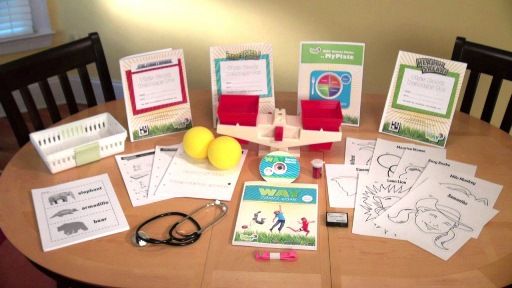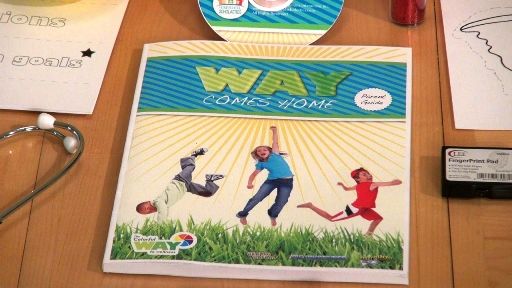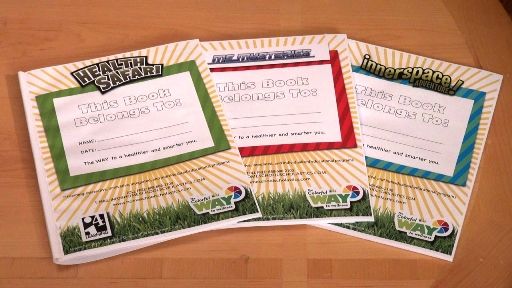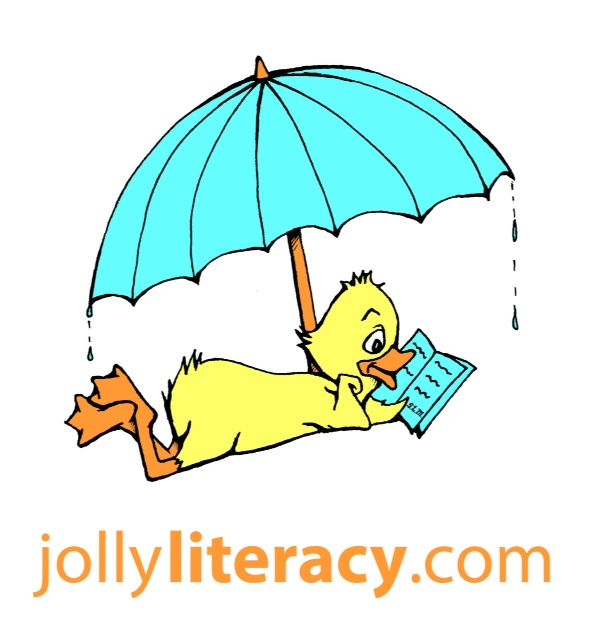When I was offered a chance to review the Spiritual Circle Journal for Kids & Teens by Spiritual Circle Journal, I was excited.

Journaling is a habit that my children and I have actually built and stuck with in our home over the past several months. Typically, before breakfast, as a part of the children's "Five Before Breakfast", each child writes the date and a sentence to a page in a blank journal with half of each page blank and half ruled. Sometimes, the children draw pictures, too. Then, over breakfast when we are home for breakfast and not taking it to-go in our minivan, we typically center much of our reading and conversation on topics of faith. So, when I saw the Spiritual Circle Journal for Kids & Teens, I thought:
Perfect! Either my oldest or my middle child can use this to connect morning journaling and faith pursuits. I'd love for each of my children to begin keeping a prayer journal and this could be a perfect way to begin drawing them all into doing so. When it comes in, I will let the children see it and see which child seems most interested in beginning to use it.
With that, I signed up for the review and eagerly awaited the arrival of our review journal.
Simple, Sturdy, and Filled with Opportunities to Help You Listen to Spirit-Speak, as I Call It
When our Spiritual Circle Journal for Kids & Teens arrived, I was impressed with its practical simplicity and sturdiness.
The journal is spiral bound with a binding that does not unravel. journal and has heavy paper pages, which allow kids to get creative without so much worry about bleed-through. There is a protective, clear page over the front cover and a design-your-own cover page underneath the first paper page in case children wan to personalize the journal. After that, there are parent pages, journal pages, and summary pages.
At the front of the journal, several Parent/Teacher/Leader pages offer information on how to use the journal with recommended ages (8 and up). In this brief, but thorough section, the author explains the concept of the journal - to provide kids and teens with clear direction on how to connect with God during a fulfilling quiet times from a young age through the use of the journal as a tool.
Within the tips, the author of the journal encourages grown ups to actually sit down with children to complete some journal entries in order to provide examples, ignite excitement, and prevent frustration.
While sitting together with children to use the journal, parents are encouraged to share stories of how God has worked in their own lives with their children. You know, the "more is caught than taught" theory: If children hear grown ups talking about how God has moved them, witness them praying, recognize them listening for what I call "Spirit-speak" and, then, see grown ups acting on what they have heard, then children will follow suit.
The author makes other good points in the introductory pages, too. One that stood out for me was an explanation of the connection between writing with real pen and ink and the ability to focus. I always loved writing long hand as a child and still enjoy it as a grown up, but sometimes, it seems easier or more convenient to tap and type. Perhaps, though, when prayer journaling, pen-and-paper is the way to go!
By actually sitting down and physically writing, we often maintain more focus. For children writing long hand in their journals, such focus may help them to to make real and relevant connections with God and better understand how the Spirit is guiding them along life's journey.
I dare say, we could all use a bit more guidance from God, or rather understanding of His will in our lives and motivation to make His will our own through thought and deed... prayer and action.
Building a habit of using the Spiritual Circle Journal for Kids & Teens creates a tool for children to talk and listen to God, as well as to reflect upon, and, in turn, understand and act upon, what God wills of them.
Journaling to Build a Relationship with God
In 10-15 minutes a day, once a week (or at whatever interval a child finds works), kids and teens can deepen their relationship with God through using the specially designed pages of the the Spiritual Circle Journal for Kids & Teens.
After the parent pages and a personal page, each of the main pages of the journal look alike. They contain nine graphic images, each meant for a specific type of talking to or listening to God. A key and a filled-in sample page provide children with memory-joggers for what each of the nine graphics is for:
- Journal Entry- what's going on in your day; what you're thinking about
- Lyric/Verse- a line of a song or Bible verse that has caught your attention
- Message- the most important thing you learned from your Bible reading
- Confession- anything that you need to confess to God
- God Moving- something you are seeing God do in your life
- Lesson Learned/Lightbulb Moment- any lesson you've learned lately
- Prayer- what you want to ask God for
- Thank you/Adoration- what you can praise God for
- Actions- something you think God wants you to do
x
Of course, these category prompts are just suggestions. Children may use the blank graphics for whatever they wish according to how the Spirit speaks to them. They may also leave some graphics blank or, if feeling particularly inspired one day with more to write, draw, or color than will fit on a particular graphic page, they may use blank pages between each graphic page to express their creativity and thoughts.
There are enough graphic pages for children to use once a week throughout the year, with a few to spare. Then, there are summary pages (for use once a month with a few to spare), which contain nine circles in which children are encouraged to record:
- lessons learned over the time period of the journal
- favorite verses to memorize or focus on
- "God Stories" or things God is doing in your life
- Bible characters you want to learn more about
I think it could also be fun to use these pages to:
- write notes on feast days and saints studied throughout the year
- track prayer requests from friends and family
- jot down what comes to mind during Adoration hours
- key into Sunday Gospel readings
- record notes on monthly liturgical year dedications
There is definite flexibility within the loose structure of the nine circles.
How We've Been Using the Journal
Flexibility is key in my family's life. In fact, it is so key that sometimes I feel like a poster child for not using things as intended - and, in saying this I mean not using resources as an author intends nor using them as I initially intend to do so.
For example, I intended to receive our Spiritual Circle Journal for Kids & Teens, to introduce it to my children, and to let whichever child was most excited about it claim it as his or her own, going to town with it as a once-a-week-or-more alternative to his or her regular journal. Instead, I received the journal, read the introductory materials, introduced the journal to the children during a post-breakfast Together Time, and did a page together as a sample. I did the same thing the next day. Then, the next time I pulled the journal out, I asked who might like to have it.
My children, not being "children" as they often are did not clamber, "Me. me. ME!" when I asked who wanted the journal, and it was not because none of them wanted it. Rather, it was because they liked to do it together, or so they told me. It was not until I began writing this review that my oldest confided in me:
I like that it is easy to switch from a one-person thing to a multi-person thing. I liked the journal as a multi-person thing and do not want to use it as a single-person thing yet, because that would be unfair to my brothers and sisters. I might like to use it myself if we all got one.
My heart melted when he did this since he is not always the most selfless person. The fact that he did not vie for solo use of the journal on the day I asked who wanted to claim it as his or her own evidences his personal growth in character and virtues. (Praise God!) My lack of awareness that that was what was going on attest to... um, Mommy fail!
Or maybe it attests to obedience. For, if there are two things the Spirit has been saying to me lately, they are "roll with it" and "listen and act".
In rolling with the fact that none of my children asked to take possession of our Spiritual Circle Journal, I opted to continue use of it collectively until someone wanted to use it individually as intended. Using it together, over breakfast as a part of our Together Time Bag, the children dictated responses to the journal prompts to me and I voiced and wrote some of my own. We, then, chatted about our thoughts before one child each time took a turn at coloring the day's page. Using the journal this way may not have developed a habit of personal prayer and quiet time for any of my children, but it did deepen both our relationship with God and connectedness with one another.
My children told me more than once that they liked the new habit of our directed collective prayer and reflection together. Likewise, I found hat as I wrote down what the children said, I got better at listening and acting. Sometimes the Spirit spoke to me through the children's words, I listened, and, later, found ways to act on what I heard. Other times, the Spirit prompted me to model how to talk to and listen to God through my voiced responses. Always, the time was fruitful.
My 10-Year-Old's Thoughts on the Journal
My oldest son was the only one awake when I began writing this review, so I asked him what he thought about the journal. He said:
It's good. I like the symbols in it.
The symbols are a smart idea and great to get people to do it. It would be boring if it were all in boxes. The symbols make it more interesting.
He tends to be a visual learner and to express himself in drawing or through demonstration more than through writing, so his comment made total sense to me.
My oldest son went on to say:
(The author actually suggests using the journal only once a week, but sometimes we used it more often.)
I think it is good to use once every two days at least. That gives you a chance to think of things in between, but still to use it a lot.
Finally, when I asked my son what maekes this journal different than other journals he has used, he said
That is certainly the truth. The Spiritual Circle Journal for Kids & Teens was designed to help children grow in faith. In my family;s experience, it meets that goal when used together as a family (as is NOT intended) or when used individually (as IS intended.)
This journal is for your soul unlike other journals. It helps you become closer to God.
Rolling with It
As I look ahead, I know I want to continue to use the journal.
As I reflect upon my son's thoughts, I intend to find a quiet moment to speak 1:1 to my daughter and my youngest son about the journal and its current use in order to glean if each really wants to continue to use the journal as a collective morning practice or if they would like their own journals. Pending what each says, I will either:
- carry on as we have been doing, periodically asking if anyone wants to take over the journal personally,
- give the journal to my oldest letting him know his younger siblings are totally okay with me doing so and he is therefore not being "unfair",
- or take advantage of the 2-for price on the journals to by each of my children and me new copies of the journal so we can each go solo at last (as I initially intended to do so.)
Yes, basically, I intend to just keep rolling with things, listening and acting in the moment, and letting the journal (or journals?) bless one or more of us with directed prayer time. The Spiritual Circle Journal for Kids & Teens certainly is worth continuing for me and mine and, I'd say, worth trying for you if you have a child that likes to color, write, and pray and could use a tool for building a habit of connectedness with God.
Learn More
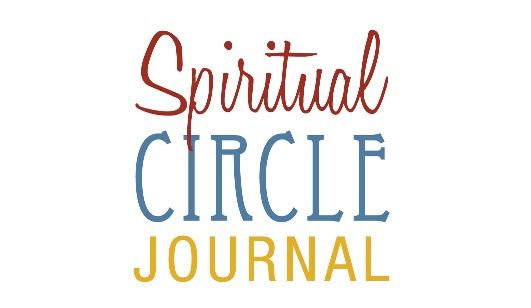
- Facebook: Spiritual Circle Journal
- Instagram: @spiritualcirclejournal
- Twitter: @liz_lassa
- Hashtags: #hsreviews #spiritualcirclejournal #journal #prayerjournal #spiritualcirclejournalforkids #kidsjournal
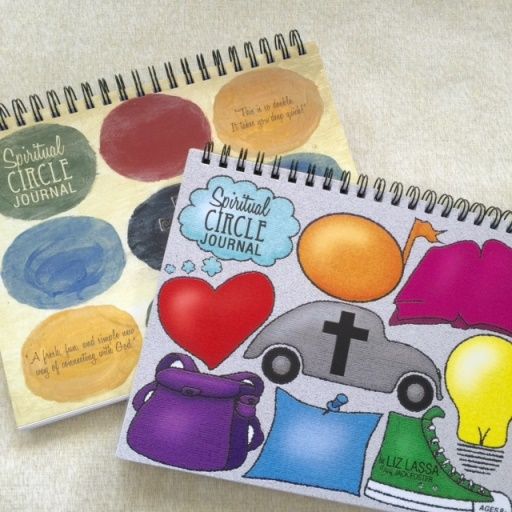
The Spiritual Circle Journal can be found in an adult version or the Kids/Teen version I have reviewed here. The Kids/Teens journal costs $15, or two for $26. There is also a bulk
rate price for homeschool co-ops! Contact Spiritual Circle Journal for more
information on the bulk rate.

Forty Schoolhouse Review Crew families had someone center prayer time with the Spiritual Circle Journal for Kids & Teens. Read all the reviews by clicking through the banner above.











